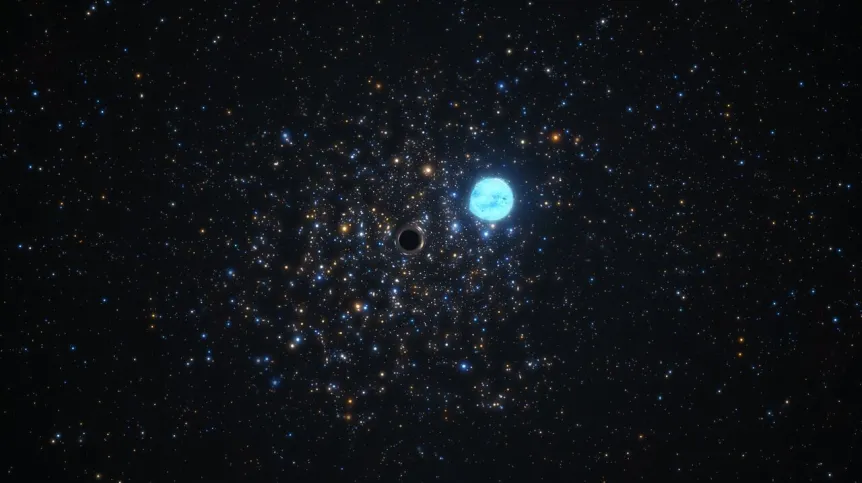
Astronomers have detected a small black hole in a star cluster in one of the galaxies outside the Milky Way. In their research, they used the VLT telescope operated by the European Southern Observatory (ESO) as well as data from the Polish OGLE project conducted by the University of Warsaw.
The black hole is hidden in a cluster of stars called NGC 1850, located 160,000 light years from Earth. The cluster belongs to the Large Magellanic Cloud, a neighbouring galaxy of the Milky Way.
Sara Saracino of the Astrophysics Research Institute of Liverpool John Moores University in the UK, who led the research project, compares her work to 'Sherlock Holmes tracking down a criminal gang from their missteps'.
She said: “The result shown here represents just one of the wanted criminals, but when you have found one, you are well on your way to discovering many others, in different clusters.”
The 'criminal' in this case is a black hole that is 11 times the mass of the Sun. And the clue that led astronomers to the object was the gravitational effect of the black hole on a star orbiting it with a mass of 5 times the mass of the Sun.
Small stellar-mass black holes of this type have been detected before in other galaxies, mainly by analysing X-rays emitted in the process of matter absorption by the black hole, and for several years also thanks to observations of gravitational waves.
However, most black holes of this type do not reveal their presence through the above processes. They can then only be identified by looking at their effect on the movement of nearby stars (the so-called dynamic method). The black hole in the NGC 1850 cluster is the first black hole detected with this method outside the Milky Way. In addition, it is also the first black hole detection in a young (100 million years old) star cluster.
For the analysis, the scientists used data collected over two years by the Multi Unit Spectroscopic Explorer (MUSE) instrument on the Very Large Telescope (VLT) at the Paranal Observatory of the European Southern Observatory (ESO). MUSE allows scientists to observe crowded areas such as the inner regions of star clusters while analysing the light from each individual star, obtaining information about thousands of stars in one exposure.
Additional data came from the Optical Gravitational Lensing Experiment (OGLE) project run by the University of Warsaw, and from the Hubble Space Telescope (operated by NASA/ESA).
Astronomers now hope that the dynamic method will allow them to detect more young black holes in other star clusters. By comparing them with more mature black holes in old clusters, they can learn more about their evolution.
The results of the research project are presented in a paper to be published in the scientific journal Monthly Notices of the Royal Astronomical Society. Astronomers from the UK, Italy, Sweden, Spain, Germany, Australia and Canada were involved in the project. (PAP)
cza/ agt/ kap/
tr. RL













